Sometimes small holes appear on your favorite things. This happens even with practically new items that you feel sorry to throw away. If you sew up the torn place with an invisible seam or without one, then you can continue wearing the sweater or trousers. You can do this yourself, without resorting to the services of repair shops.
How to disguise a hole in a knitted t-shirt
The appearance of clothing suffers from visible defects. When holes appear on knitwear, the likelihood of them unraveling increases, so you need to know how to sew up a tear unnoticeably.
There are several ways to do this. For example, you can match the threads to the color of the product, use tape and an iron to glue the tear.

When choosing a method to correct a defect, all the features of its appearance are taken into account:
- gap size;
- evenness of edges;
- fabric structure.
Based on this, the type of thread and size of the needles needed for the work are determined. In some cases, it is better to use nylon threads from women's tights. The needle is selected based on the thickness of the fabric of the product.
Invisible darning
When a hole in a T-shirt is barely visible, it can be carefully sewn up without being noticed. Darning is considered a classic way to fix the situation and a guarantee that the tear will not get bigger when worn.
For work it is better to take elastic thin threads, simple ones can tighten the fabric, and as a result the problem area will be visible from the side. Threads are selected to match the color of the product or use less noticeable in color from the available options. For work use needles for beads.
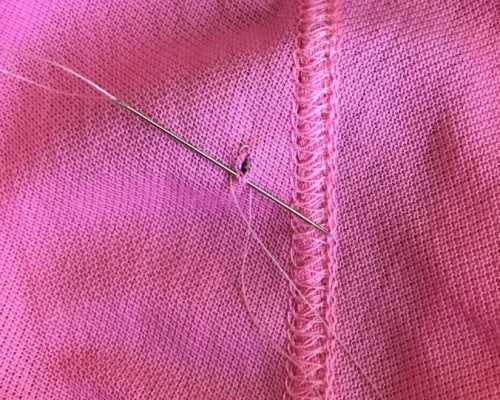
The procedure is as follows:
- Pull the thread out of old stockings and insert it into the needle, use a needle threader for this purpose. It is problematic to insert it by hand - it is too thin and soft.
- Do not tie a knot at the end, making the first stitches from the front side of the product.
- Trying not to tug the fabric too much, gather the loops onto the end of the needle. It is better to do this from the bottom and from the top, each time making a small stitch. The material should not stretch much.
- When all the loops have been picked up, move the needle to the wrong side and finish the work with a few securing stitches.
- After cutting the thread, straighten the fabric and iron it with a warm iron from the inside. The nylon will melt a little, reducing the possibility of the hole getting bigger.
Iron-on repair without seams
You can sew up a hole without a seam if it is a very small hole. To do this, you will need a hot iron and a cloth to iron it on.
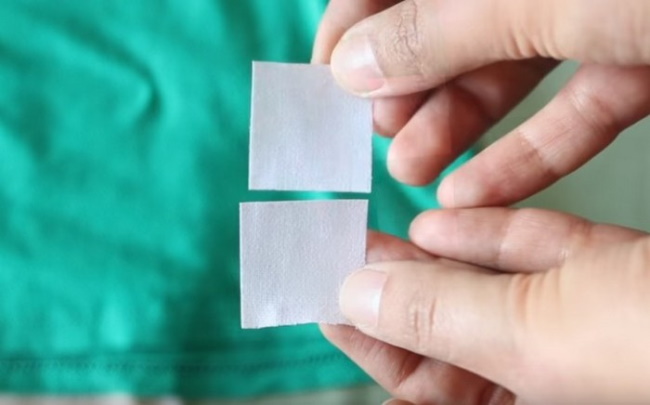

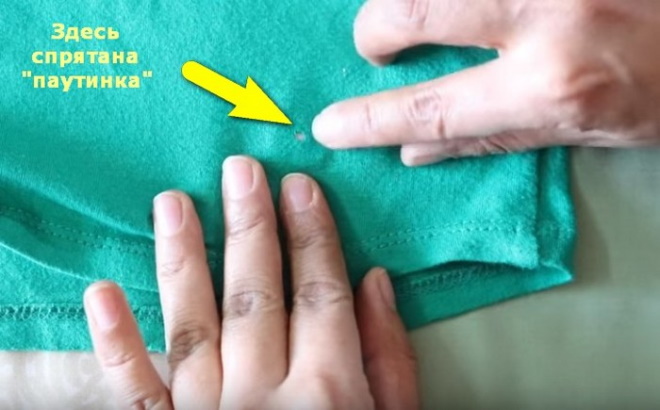
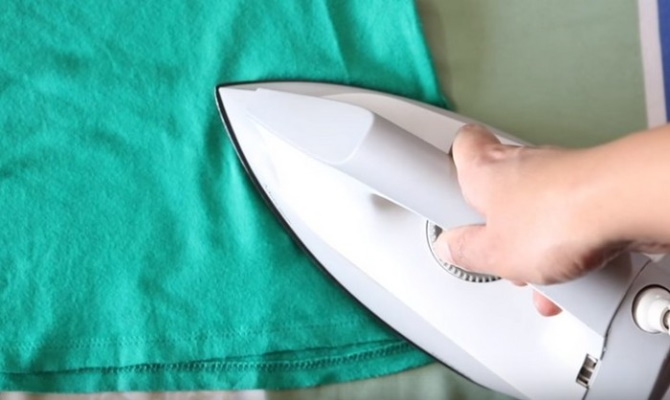

The sequence of actions is as follows:
- Spread the product on a flat surface and cut 2 pieces of the required size from the adhesive tape.
- Cut the corners of both pieces, fold them shiny sides up and place them under the hole.
- To make the connection beautiful and strong, you need to support it with your fingertips.
- Preheat the iron before ironing wool and iron the item from the inside (preferably through a thin cloth) for at least 30 seconds.
Using fabric bonding tape
You can use thin tape to glue the fabric. It does not tighten the material and firmly secures the edges.

The work is carried out as follows:
- The T-shirt is turned inside out.
- The edges of the tear are joined into a smooth fabric.
- Place a tape and a piece of non-woven fabric on the problem area.
- To prevent the fabric from moving inside, it is lightly moistened with water from a spray bottle.
- Hold the heated iron over the fabric for no more than 10 minutes, then remove the protective fabric and turn the T-shirt inside out.
How to neatly sew up a large round hole
It is difficult to sew up round holes of large diameter. They do not have clear edges and are difficult to gather into a smooth line. To achieve an invisible connection, an elastic thread is used, which will not be visible on the product.
A hemisphere should be placed under the section to be sewn. Using a light bulb would be ideal.
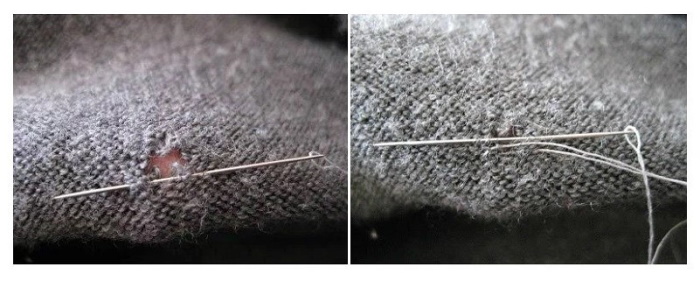
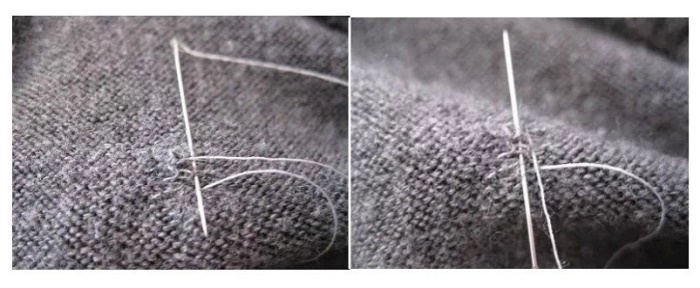
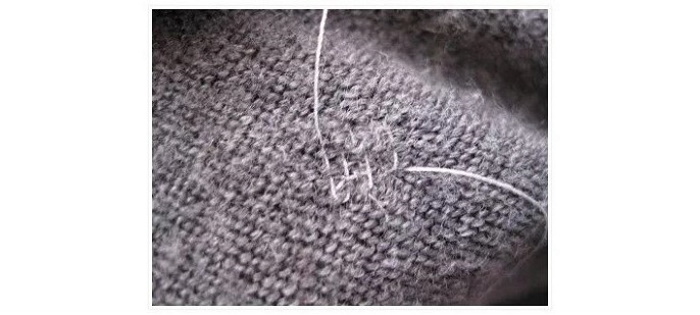
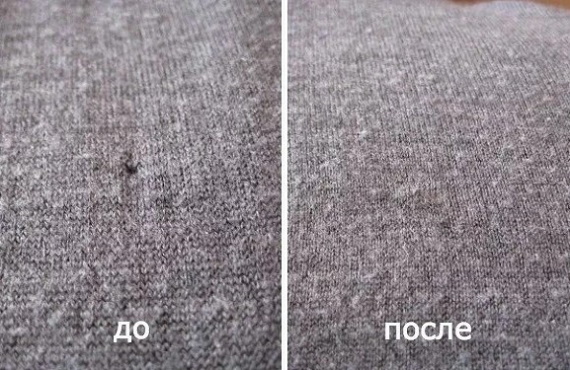
The procedure is as follows:
- Make the edges even by cutting off any frayed fibers.
- Using a nylon thread threaded into a needle, move in a circle to collect all the missing loops.
- Connect the loops in sequence with neat stitches.
- To make the hole smaller, tighten the tear and secure the thread on the back of the product. At the end, you can carefully smooth out the work area.
The method is good for working with T-shirts that have a large pattern and a fleecy surface. Otherwise, the tear may stand out on plain fabric.
How to properly stitch up a longitudinal damage to a product
If the tear is longitudinal, you can sew up the T-shirt in the following way:
- Bend the edges of the tear slightly towards the center.
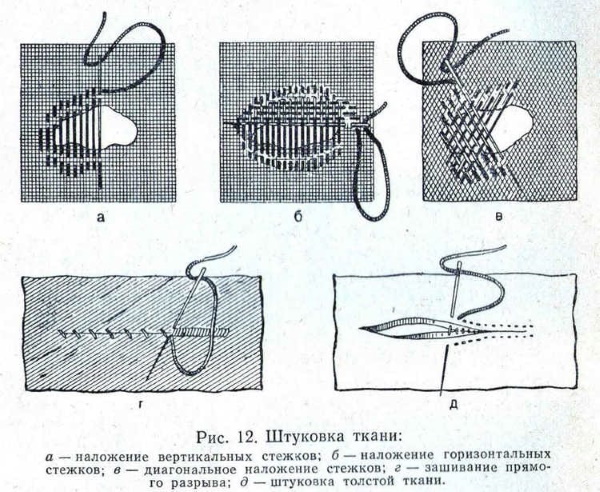
- Basting should be done from the wrong side, the needle will be inserted forward.
- To get a strong connection, sew through the edges. This will strengthen the darning line.
Hole in hand knitted fabric
To repair hand-knitted items, it is recommended to use a special knitted stitch. It is best to take the remains of the threads from which it was knitted. If the break is not a consequence of long-term wear or a strong snag, it can be closed unnoticed by others.
To work you need to prepare a hook and a needle with knitting thread.
The procedure is as follows:
- Pick up all dropped stitches.
- Take a needle and thread and gather them in pairs, as if the fabric had not been torn.
- Bring the needle to the wrong side, make a few securing stitches, and cut off.
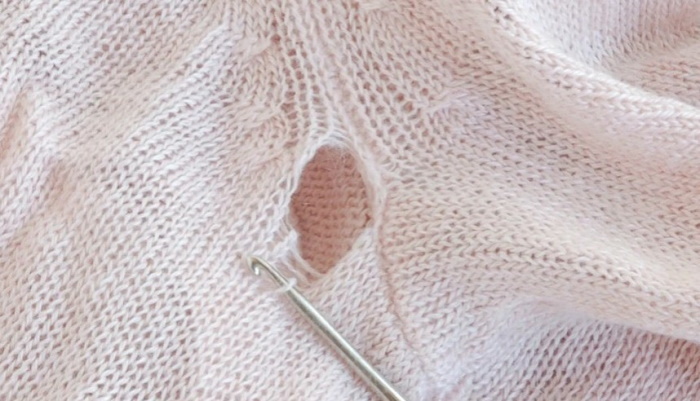
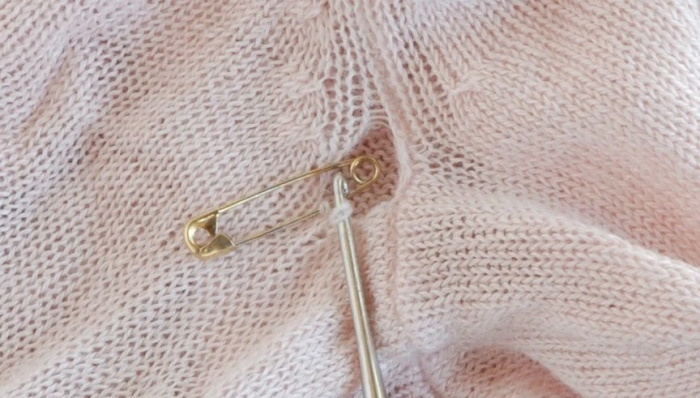
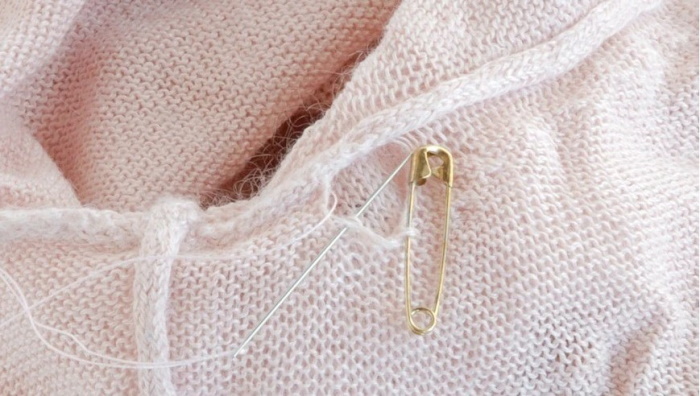

Large holes are closed with a step "forward with a needle". It is done around the cut. This will prevent the fabric from tightening when sewing, and the basting itself is pulled out after work.
To compensate for the volume, cross threads are passed between the outer loops of the row. They create the basis for darning. When darning, loops are passed through each thread of the base from the top to the end of the gap. Then the hole is closed from the bottom up.
Hole in genuine leather
Leather is a strong fabric, but it can also be torn. Small holes can be glued from underneath with elastic material. It is difficult to sew such cuts by hand and the seam will be too rough.
If you need to sew up leather, it is better to do it on a machine with a special foot. Beautiful decorative patches are made for such work.
For this, 2 blanks are taken:
- made of fabric, slightly larger in shape than the diameter of the tear. It is placed on the inside as a reinforcing lining;
- leather, matching the size of the hole.
They need to be sewn carefully, without shifting them relative to the product.
A hole in nylon tights
Thin material often tears or gets snagged. If there is no seal, the product tears at the toe and between the legs after the first wear. You have to throw it away or mask it with long clothes. However, it is not always possible to buy new tights, and you have to sew them yourself.
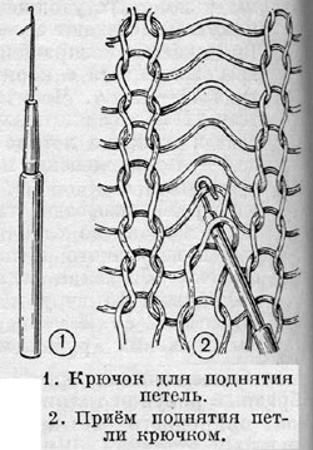
To do this you need:
- Take a thin needle and thread that matches the color of the product.
- Carefully pull the edges of the tear together, trying to catch all the missing loops.
- Insert the needle consistently, without skipping any loops, to prevent future breakage.
- To make it stronger, treat the seam with clear nail polish.
When tights become unusable, the threads from them can be used for sewing other products.
Hole in lace and guipure
It is possible to restore torn lace or guipure, but this requires a lot of effort.



It is important not to damage the structure of the weave, which means you need to know how to make stitches better. Lace repair begins with smoothing out the edges of the tear to prevent the mesh from breaking.
If the hole is not noticeable, it is better to find a suitable piece of material and sew it to the bottom of the torn item using a thin thread.
You can sew up a hole without a seam if you know the weaving features. The thread is gathered into bundles and the weaving pattern is recreated. Instead of bobbins, it is suggested to use spools on which you can throw the yarn.
Hole in jeans and pants
A dense fabric like denim can wear out and tear. It is best to sew it using the imitation weave method.
Tissue damage can occur in different places:
- on your knees;
- between the legs;
- in the pocket area;
- at the back point.
In the pocket
The pocket is a visible place, so sewing up holes in it requires creative ingenuity. It is best to choose an applique of a suitable size and interesting or to do embroidery in this place. The choice of method depends on the size of the tear, the level of fraying of its edges and where the hole is located.
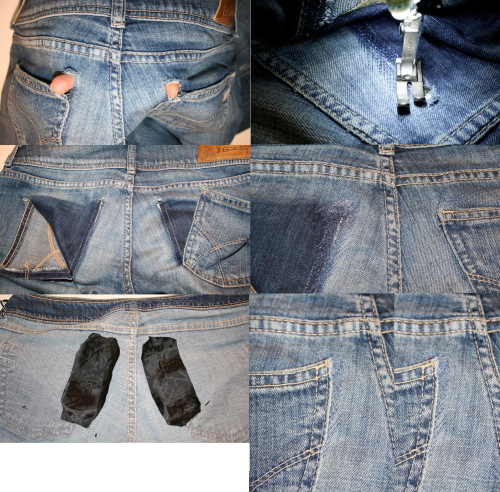
Often holes appear in inconvenient places under pockets or near pockets. It can be inconvenient to sew them up or make a patch. Darning, patching or machine stitching in such cases looks rough.
Experts recommend using a piece of denim or a large button. It will cover the sewn-up area.
Between the legs
The appearance of a hole between the legs is a common problem when wearing trousers and jeans. Such places can be darned with a thread of a suitable color, or by putting an inconspicuous patch.
You can do this by machine or by hand. When using a machine, you need to carefully clean the edges from uneven threads and set the straight stitch mode. To make the seam less noticeable, you need to steam it after the operation.
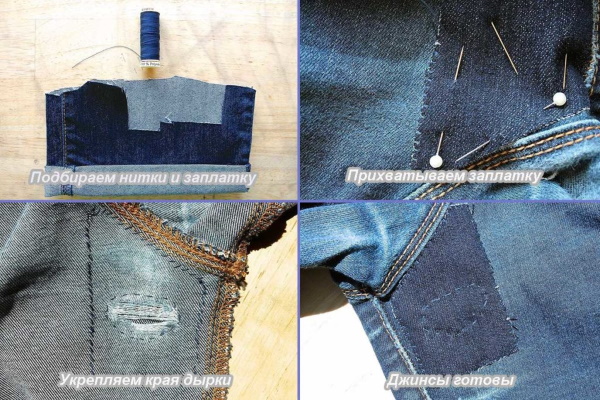
If it is decided to put a patch, the material for it is selected to be as suitable as possible in structure and color.
The actions will be as follows:
- Find the fabric and cut the patch to the desired size.
- Turn the product so that the tear is fully visible.
- Overcast the patch fabric using an overlock or a special function on the machine.
- Turn the garment inside out and baste the patch face down.
- Stitch along the edge and turn the pants inside out.
Along the seam
If the tear occurred along the seam of the jeans, then it will not be difficult to sew it up. True, the material is too dense and it is difficult to sew it by hand, but on the appropriate function of the sewing machine it is done in a few minutes. The main thing is to clean the tear area from protruding threads and stitch the edges together.
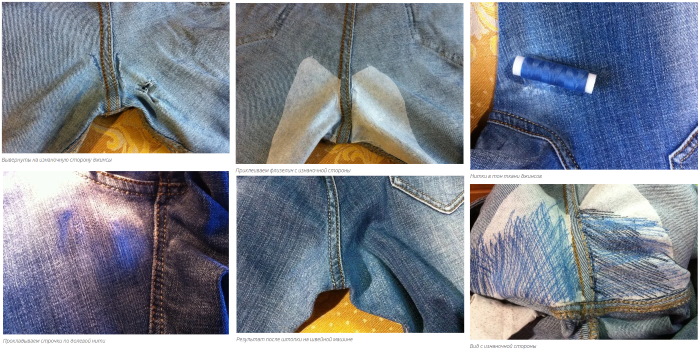
The manual method of performing a seam is performed as follows:
- Find a thread that matches the color of the trousers trim and has a higher density. Of course, the new seam will be on the inside and cannot be seen from the outside. But it is better to do everything beautifully.
- Connect the gap and baste with colored thread. You should get a straight line.
- The first stitch of the real seam should be made from the inside. This way the knot will be invisible.
- Close the seam with alternating stitches joining both sides.
- When you reach the end, make a few securing stitches from the back.
Behind
If the tear is at the back and not along the seam, you need to use darning or applique to hide it. This will make your favorite jeans fashionable. Moreover, you can get stylish pants even if the hole is very frayed.

The procedure is as follows:
- Remove any unnecessary threads and attach a suitable applique.
- Glue thin interlining on the back side.
- Place the applique on it and iron it if it is adhesive, or sew it on with a machine if the fabric is heavy.
You can leave everything as is, decorating it with beautiful decor.
On the knee
When jeans are torn at the knee, they can be repaired in 2 ways:
| Way | Description |
| Darn | For this I use threads of a matching color. The stitches are laid in a dense layer, one on top of the other. At first they go across, and then along |
| Leave the holes uncovered | To do this, they need to be decorated. If applique is used, then you need to have a thermal tape and a suitable fabric picture for work. |
Hole in the jacket
The fabric on the jacket tears mainly in children, but such troubles also happen to adults. There are several ways to fix the defect. It is important to consider the properties of the material the jacket is made of.
Raincoat or bologna requires special treatment. It needs to be sealed as quickly as possible, with a patch or adhesive fabric placed on the inside.
How to sew up a hole along a seam
If a seam on a jacket with insulation has ripped, it is necessary to remove it from the edge and sew it up, leaving a gap of 2-3 cm from the edge. It is better to make stitches strictly along the old seam holes.
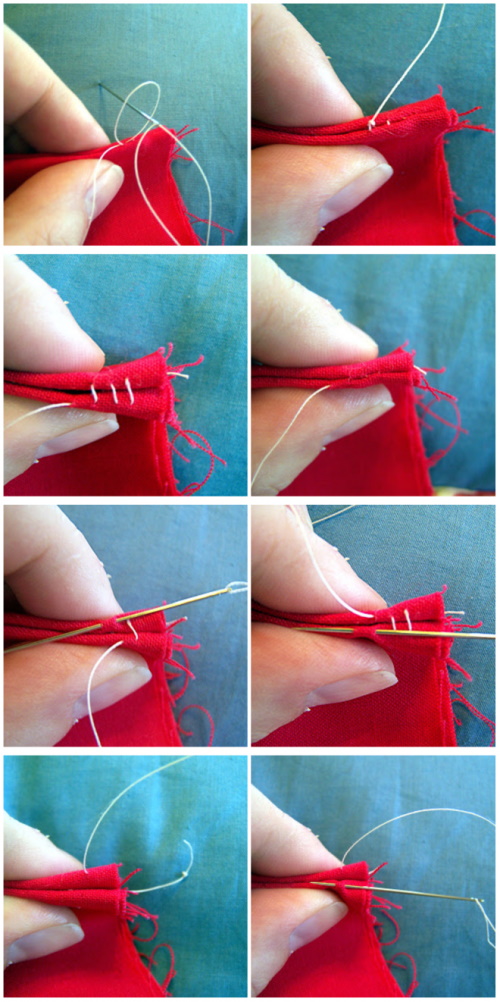
Having made one step, it is necessary to secure it with another stitch. After the row is completely completed, securing stitches are made from the inside, and the collected sealant is evenly distributed over the surface.
How to Hide a Zipper Hole
It is difficult to mend a hole without a seam, but you can hide the gap under a zipper. This will make the clothes original. It is enough to sew a small zipper inside and there will be no trace of the hole. You can use an applique by stitching the fabric on a machine.
Invisible seam on the visible part of the jacket
This stitch should be made on the inside of the garment. The needle should be very thin, and the thread should match the stitching of the jacket.
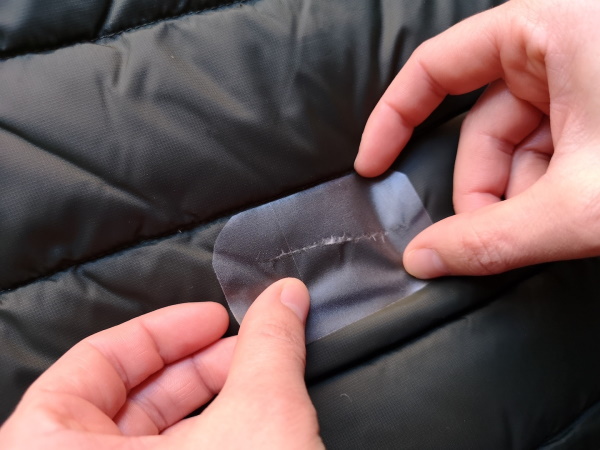
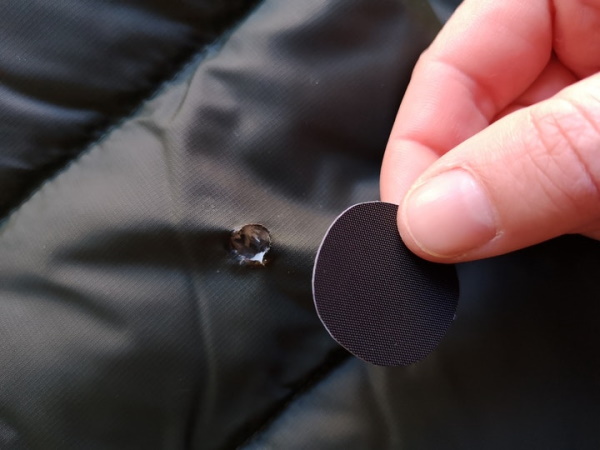
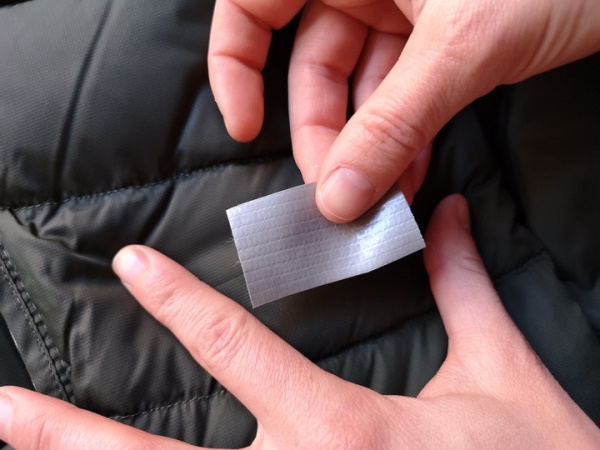
The hole is sewn up from the outside by joining the edges. At the end, the thread is slightly pulled and secured.
Fabric patches
There are several types of patches. They can be adhesive, attached from the back side, and fabric, sewn from the front. These include various appliques, braids, and stripes.
Chevrons
Such decorative details contain inscriptions with mottos, names of musical groups, clubs.
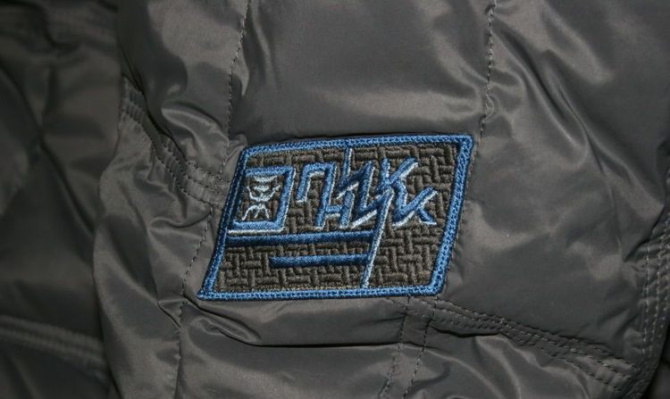
This allows you to beautifully cover the defect on the jacket and make it stylish.
Braid
This thin fabric tape is used to decorate holes and repair clothes. It is used to strengthen seams. They can be linen or cotton.
Applications
This is a decorative element for finishing and repairing clothes. Their varieties are wide: rhinestones, buttons and fabric of a certain shape.
Bias binding
It is used to create a piping along the edge of the product. Decorating a hole with it helps make the tear invisible.

Edging is done if the edges of a collar, cuff or pocket are frayed.
Tape or ribbon
This type of decorative overlay covers the imperfections of the sleeves, the bottom of the garment and the edge of the placket. All even cuts can be covered with ribbons, stitching it along the edge.
Patch pocket
You can sew up a hole almost unnoticeably if you add a patch pocket. The main thing is to make the seam even and unnoticeable.
Sewing up a hole with a blind stitch
If it is not possible to rip the garment from the inside, experts recommend using a blind stitch.
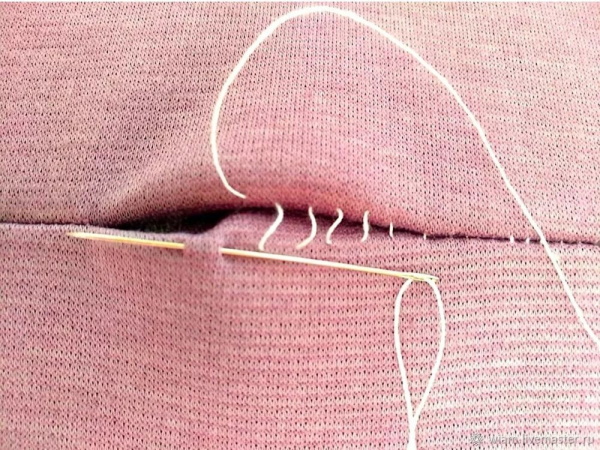
To do this, insert the needle from the inside of the product and stitch up the gap with small parallel stitches. The distance between each of them should be uniform. The thread is secured from the inside.
A hole in a knitted sweater
There are several ways to lift loose loops. The first is the simplest and allows you to make the break almost invisible after repair. To do this, take threads of the same thickness and shade and a hook. The loops are connected sequentially and at the end the thread is secured from the inside.

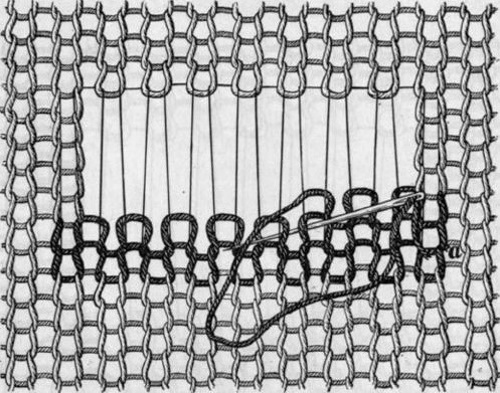
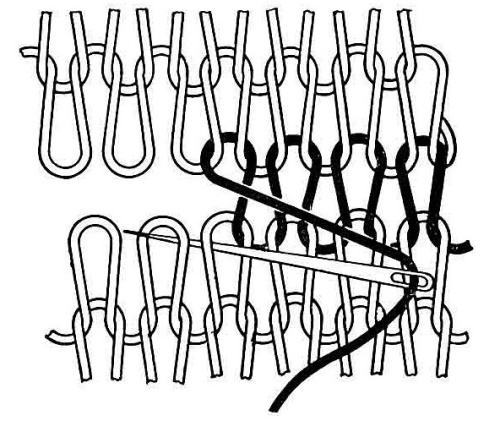
The second method is simpler and faster: the loops are simply picked up with a hook and passed through one another. Here you will have to focus on the pattern, so it is not always possible to use this option.
How to beautifully sew up a hole in thick fabric
It is quite difficult to repair a tear in thick fabric. It is better to use patches and glue for this.
The procedure is as follows:
- Place the patches over the hole and secure with a needle or pin.
- Sew or glue the patch, then iron the area.
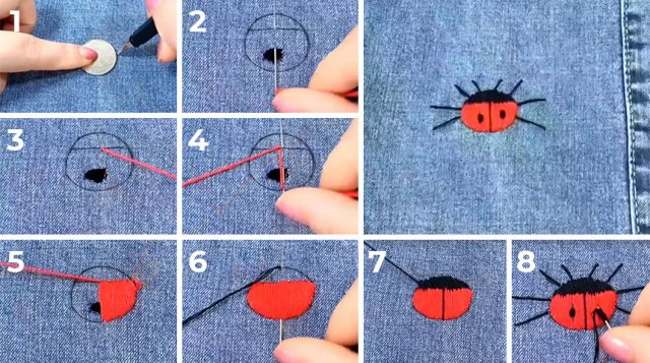
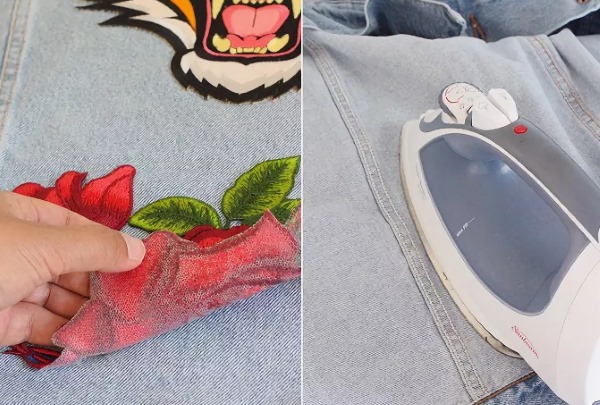

It is difficult to sew thick fabric by hand, especially so that it is hardly noticeable from the outside. Therefore, it is better to leave the repair of such items to specialists. Especially if it is an expensive sofa or leather jacket.
You can sew up a hole with or without a seam on different types of fabric in different ways. The choice depends on the performer's wishes, the type of fabric, and the complexity of the problem.
Video about darning methods
How to sew up a hole without a seam:
